Seoung-Han Lee’s enthusiasm is highly infectious. So much so, that it is hard not to be impressed by the president and CEO of Samsung Tesco and his vision for turning the company into South Korea’s top operator of hypermarkets. It will not be easy. Samsung Tesco is up against some stiff competition from both local operators and international rivals Carrefour and Wal-Mart. But Lee is confident his company’s Homeplus stores are more than a match for their rivals.
“There are different types of retailing within the hypermarket format,” says Lee. “We have developed a unique format combining global standards with local expertise to create what we call the value store.”
Put simply, Lee’s ‘value store’ concept is about more than just being a discount outlet providing products at the cheapest price. Instead, he says, it’s about offering the right sort of services, products at affordable prices, and pleasant, convenient environments.
Achieving all that means building big stores. On average, Homeplus outlets are around 114,000 sq ft, often split over a number of levels, with a 45:55 split between food and non-food. They feature a food court and a host of other tenant sections for fashion goods and accessories. And there is a big emphasis on customer service - with everything from play areas for kids to cultural centres where customers can sign up to dance classes and cookery schools.
The newly opened Homeplus store at Bucheon Sangdong, one of Seoul’s many satellite cities, is a great example of how eastern flair and western retail knowhow have been fused to make this value store concept a reality. The focus on fresh foods is particularly striking, with counters offering everything from the local delicacy kimchi (fermented cabbage) to fresh fish in a way that replicates the colour, smell and vibrancy of traditional markets. Travel through the fresh foods, past the rice ‘power aisle’ through grocery and into the non-food areas, and you suddenly get a real sense of being in one of the local department stores.
It’s all deliberate, says Lee. “Korean housewives want to buy fresh food they can cook at home. So strategically it’s important to give a strong focus to fresh as this will bring more customers to our stores, and they will then spread out and buy non-food.”
Once they are roaming through non-food aisles, Lee says shoppers notice the neat touches such as the “more attractive skyline” created in the clothing areas by the deliberate policy of not merchandising products by hanging them on the high racks that he feels would give a cheaper image. In the electronics area, everything is again open merchandised, and there is a strong emphasis on after-sales service.
The results speak for themselves. Samsung Tesco now has some of the strongest performing stores in South Korea and many are among the top performers in the entire Tesco portfolio - taking up to £1.7m a week and attracting 11,000 customers a day.
At the moment, Samsung Tesco has 22 of these ‘value stores’ up and running - 21 of them hypermarkets. Lee says it is aiming to have 58 stores by 2005 and then wants to open a further seven in 2006. The scale of this expansion is staggering - 855,000 sq ft of new space is due to open this year alone.
If the company’s aggressive expansion targets are achieved, it should be catapulted into the hypermarket sector’s top spot. Lining up to prevent that ambition being realised are some quality operators - including E-Mart and Carrefour (although Samsung Tesco claims to have recently overtaken the French firm). But the competition doesn’t bother Lee. For starters, he says Homeplus stores are outperforming their international rivals because local knowledge is used in a way that gives them the edge. Likewise, Lee is confident of overtaking his domestic rivals thanks to the fact he can leverage Tesco’s expertise in everything from store site selection to supply chain. “I think our rivals are behind us on these things,” he says.
The good news for hypermarket operators is that there is plenty of room for everybody. The Korean market is undergoing rapid structural change and expenditure is shifting away from traditional outlets into modern retail formats. Lee believes there will be 400 hypermarkets by 2005 (there are currently 250 or so in operation). If his sums are right, these stores will account for £16.8bn of sales by then - or 17.1% of total retail sales.
The bad news for all retailers is that the tough economic backdrop has hit consumer spending. In February, official figures show wholesale and retail sales experienced their biggest fall in four years. That uncertain climate was reflected in Tesco’s full-year results this week, with its joint venture reporting a meagre 1% like-for-like growth.
Nevertheless, South Korea is growing faster than many economies and Tesco executives believe their joint venture is better placed than most to handle any further slowdown in consumer spending and benefit from any uplift. Deputy chairman David Reid says: “We have achieved planned sales, profits and returns despite a tightening consumer environment. We opened seven hypermarkets and we have another eight opening next year. We also opened a distribution centre this week, providing infrastructure for future rapid development.”
That distribution centre can be found at Mokcheon, a couple of hours’ drive to the south of Seoul. With its 49,500 sq m of warehousing, automated sortation system and the capacity to handle 1.8 million cases a week within three years, this £40m facility can truly be called state-of-the-art.
It is just one example of how knowledge is being transferred from Tesco to South Korea. The trial of the Tesco.com online model at two stores is another example, as is the Price Launch initiative unveiled last month. This is based around Tesco’s ‘We sell for less’ activity and is an innovation for a country used to price cuts that are both local and temporary. “Our rivals do not understand the programme,” says Lee. “The important thing is to gain the consumers’ trust on price. This gives us a stable platform on which other games can be played.”
As far as Lee is concerned, however, there is only one game worth playing - becoming the number one hypermarket retailer. And you can’t help feel that it is a game Samsung Tesco is going to win.
“There are different types of retailing within the hypermarket format,” says Lee. “We have developed a unique format combining global standards with local expertise to create what we call the value store.”
Put simply, Lee’s ‘value store’ concept is about more than just being a discount outlet providing products at the cheapest price. Instead, he says, it’s about offering the right sort of services, products at affordable prices, and pleasant, convenient environments.
Achieving all that means building big stores. On average, Homeplus outlets are around 114,000 sq ft, often split over a number of levels, with a 45:55 split between food and non-food. They feature a food court and a host of other tenant sections for fashion goods and accessories. And there is a big emphasis on customer service - with everything from play areas for kids to cultural centres where customers can sign up to dance classes and cookery schools.
The newly opened Homeplus store at Bucheon Sangdong, one of Seoul’s many satellite cities, is a great example of how eastern flair and western retail knowhow have been fused to make this value store concept a reality. The focus on fresh foods is particularly striking, with counters offering everything from the local delicacy kimchi (fermented cabbage) to fresh fish in a way that replicates the colour, smell and vibrancy of traditional markets. Travel through the fresh foods, past the rice ‘power aisle’ through grocery and into the non-food areas, and you suddenly get a real sense of being in one of the local department stores.
It’s all deliberate, says Lee. “Korean housewives want to buy fresh food they can cook at home. So strategically it’s important to give a strong focus to fresh as this will bring more customers to our stores, and they will then spread out and buy non-food.”
Once they are roaming through non-food aisles, Lee says shoppers notice the neat touches such as the “more attractive skyline” created in the clothing areas by the deliberate policy of not merchandising products by hanging them on the high racks that he feels would give a cheaper image. In the electronics area, everything is again open merchandised, and there is a strong emphasis on after-sales service.
The results speak for themselves. Samsung Tesco now has some of the strongest performing stores in South Korea and many are among the top performers in the entire Tesco portfolio - taking up to £1.7m a week and attracting 11,000 customers a day.
At the moment, Samsung Tesco has 22 of these ‘value stores’ up and running - 21 of them hypermarkets. Lee says it is aiming to have 58 stores by 2005 and then wants to open a further seven in 2006. The scale of this expansion is staggering - 855,000 sq ft of new space is due to open this year alone.
If the company’s aggressive expansion targets are achieved, it should be catapulted into the hypermarket sector’s top spot. Lining up to prevent that ambition being realised are some quality operators - including E-Mart and Carrefour (although Samsung Tesco claims to have recently overtaken the French firm). But the competition doesn’t bother Lee. For starters, he says Homeplus stores are outperforming their international rivals because local knowledge is used in a way that gives them the edge. Likewise, Lee is confident of overtaking his domestic rivals thanks to the fact he can leverage Tesco’s expertise in everything from store site selection to supply chain. “I think our rivals are behind us on these things,” he says.
The good news for hypermarket operators is that there is plenty of room for everybody. The Korean market is undergoing rapid structural change and expenditure is shifting away from traditional outlets into modern retail formats. Lee believes there will be 400 hypermarkets by 2005 (there are currently 250 or so in operation). If his sums are right, these stores will account for £16.8bn of sales by then - or 17.1% of total retail sales.
The bad news for all retailers is that the tough economic backdrop has hit consumer spending. In February, official figures show wholesale and retail sales experienced their biggest fall in four years. That uncertain climate was reflected in Tesco’s full-year results this week, with its joint venture reporting a meagre 1% like-for-like growth.
Nevertheless, South Korea is growing faster than many economies and Tesco executives believe their joint venture is better placed than most to handle any further slowdown in consumer spending and benefit from any uplift. Deputy chairman David Reid says: “We have achieved planned sales, profits and returns despite a tightening consumer environment. We opened seven hypermarkets and we have another eight opening next year. We also opened a distribution centre this week, providing infrastructure for future rapid development.”
That distribution centre can be found at Mokcheon, a couple of hours’ drive to the south of Seoul. With its 49,500 sq m of warehousing, automated sortation system and the capacity to handle 1.8 million cases a week within three years, this £40m facility can truly be called state-of-the-art.
It is just one example of how knowledge is being transferred from Tesco to South Korea. The trial of the Tesco.com online model at two stores is another example, as is the Price Launch initiative unveiled last month. This is based around Tesco’s ‘We sell for less’ activity and is an innovation for a country used to price cuts that are both local and temporary. “Our rivals do not understand the programme,” says Lee. “The important thing is to gain the consumers’ trust on price. This gives us a stable platform on which other games can be played.”
As far as Lee is concerned, however, there is only one game worth playing - becoming the number one hypermarket retailer. And you can’t help feel that it is a game Samsung Tesco is going to win.



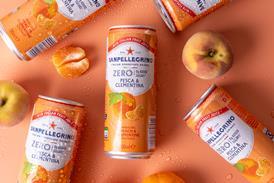





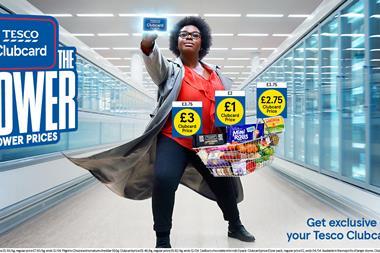


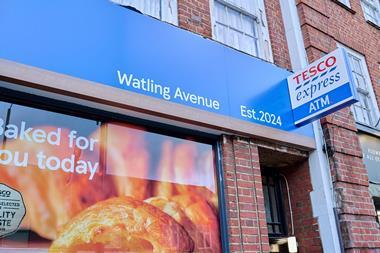
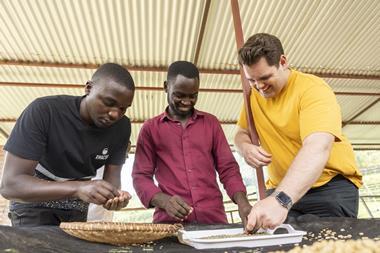
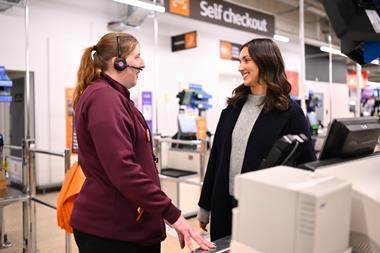

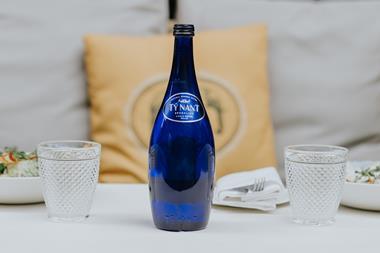

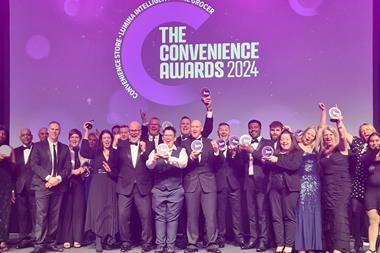
No comments yet